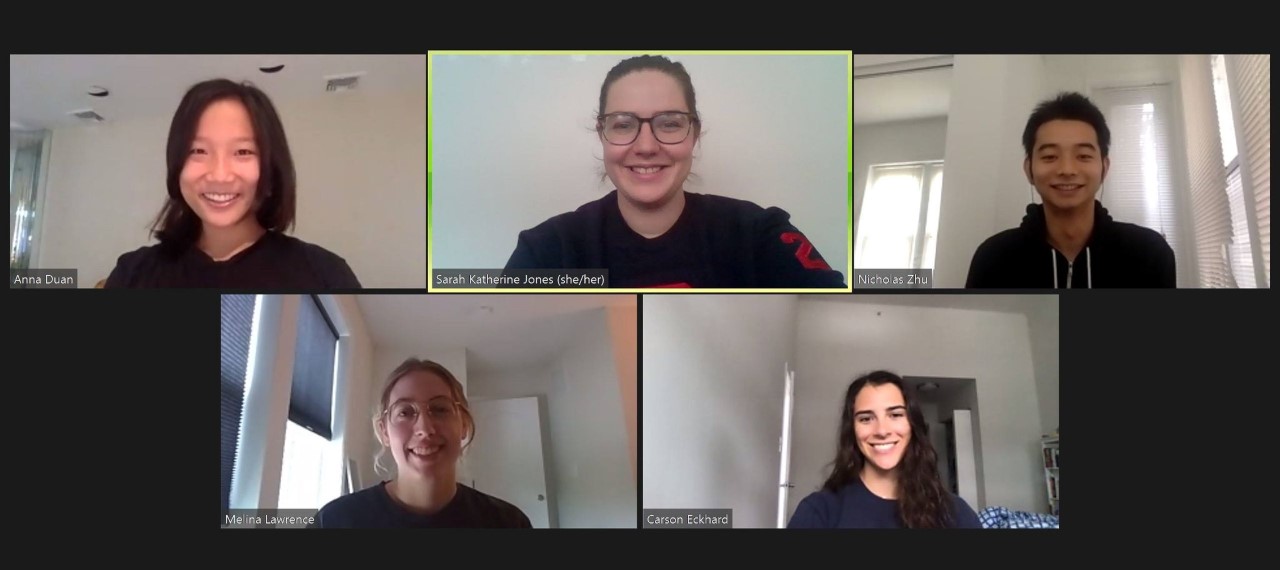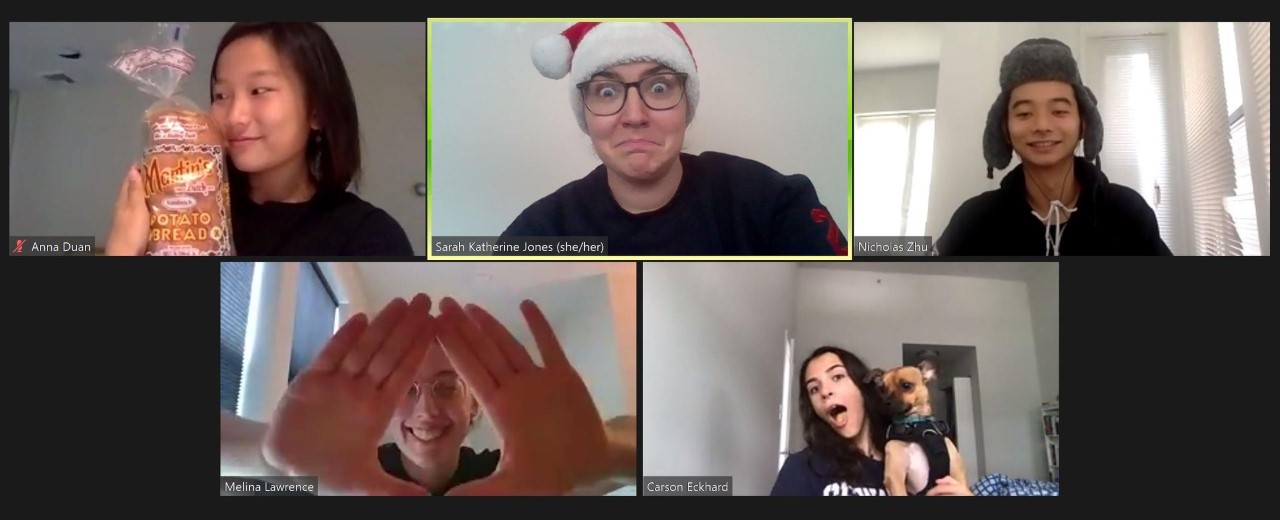
This summer, the 2020 cohort of Jacques Gordon Fellows each undertook an internship at an organization dedicated to improving the quality of life in cities. Although their work varied in discipline and (virtual) location, they all witnessed the exacerbation of already-drastic inequities in American cities due to COVID-19. To follow are their reflections on the future of cities, informed by their work over the summer.
The End of Cities or a Reimagining of Urban Life?
Is it the end of cities? Reports suggest that as a result of the COVID-19 pandemic, people are moving away from cities at record rates. While the exact numbers are unknown, the impact of this so-called “exodus” is clear: in New York City, tax revenues declined by 46% in June of 2020. More broadly, as COVID-19 rapidly spreads in America’s cities, it is overwhelming their transportation, healthcare, and public services, and casting doubt on the safety of their once-celebrated residential density. With the United States experiencing the highest rate of COVID-19 infections and deaths in the world, many are wondering if this pandemic means the end of cities.
Criminal Justice During The Pandemic: The Importance Of Grassroots Criminal Justice
Carson Eckhard
The Liberation Foundation, Philadelphia, PA
As COVID-19 spreads rapidly across the US, one population has been largely overlooked, despite contracting the virus at astronomical rates. According to one study, the COVID-19 infection rate for incarcerated people is 5.5 times higher than that of the general US population. Incarcerated Americans remain among the most vulnerable groups at risk of contracting COVID-19, and with often less-than-adequate prison health care, they are more likely to suffer complications.
It is certainly true that the pandemic has exacerbated previously-existing inequities in American cities, and the carceral system is no exception. This summer, as people across the world called for an end to police brutality and anti-Black racism, the American prison system became a center of the protest, as more and more people globally joined the fight for prison abolition.
Through the Gordon Fellowship, I had the opportunity to work on The Liberation Foundation, a Philadelphia-based nonprofit working to free incarcerated people serving wrongful convictions and disproportionate sentences while advocating for legislative action that benefits incarcerated Pennslyvnians. Founded by Terrance Lewis, an activist and exoneree, The Liberation Foundation aims to advocate for incarcerated people, while working towards a Philadelphia without prisons. During my internship, our team talked regularly about the pandemic. Notably, incarcerated people across the country were released due to the health risks posed by the virus’ rampant spread in prison. The state’s relative willingness to release those serving sentences during the pandemic demonstrates that it is possible to decarcerate the US, even if the change is incremental at first. As the battle against Covid rages on, it is imperative that we support incarcerated people, and continue to fight for their health and freedom.
Building Lines of Communication with Hard to Reach Communities
Sarah Jones
SKDKnickerbocker, Washington, DC
Through the Gordon Fellowship I worked for SKDKnickerbocker, a public affairs and political communications consulting firm where I helped several city governments and school districts with their COVID-19 communications efforts. Amid a pandemic with community-wide spread, it was important that the city reached as many residents as possible to increase the amount of residents practicing social distancing, washing their hands regularly and wearing masks. One of our main tasks with assisting city governments was helping their communications team reach communities that often fly under the radar in city government communications.
Non English speaking and immigrant communities were especially hard to reach. Before COVID-19, the city we worked with had developed their translation capabilities for press releases and other city communications but had not created strong connections and channels within these communities. Our job was to find creative and effective ways to reach these groups. We developed relationships with a local Spanish language radio, identified and did media training for spanish speakers in city government and arranged several interviews on topics including COVID-19 prevention and city resources for financial and food assistance during the pandemic. We also communicated with local organizations and community leaders to hold virtual roundtable meetings to connect city officials and county board members with immigrant communities. These new communications channels and relationships with communities will last well beyond the pandemic and help city governments be more inclusive and broad in their communications.
New Transportation Priorities in the COVID-19 era
Anna Duan
The Metropolitan Planning Council, Chicago, IL
Since mid-March, public transportation ridership in large cities has plummeted as much as 92% due to capacity limits in response to the pandemic. This summer, as protests erupted around police brutality and racial justice, cities including Philadelphia, Minneapolis and Chicago responded by reducing or even shutting down transit services, citing safety concerns.
As it is, communities of color already face the greatest transportation barriers to opportunity and recreation resulting from inequitable spatial configurations of transportation systems and housing. So, unsurprisingly, the burden of this year’s transit disruptions fell disproportionately on people of color, who are the most likely to rely on transit and work in essential industries.
This has prompted some cities to begin to rethink transportation. At the Metropolitan Planning Council (MPC), I worked on a project where we tried to distribute bikes in low-income Chicago neighborhoods. In another project, I researched how factors including race, income, and population correlate with sidewalk walkability in Chicago-region municipalities. In addition, I participated in conversations about equity-based performance measures, which can be used to inform more equitable transportation investments.
The COVID-era reimagining of transportation could make our transit systems more sustainable, equitable, and safe. Like MPC, other transportation advocates and authorities are rethinking the travel modes we use, promoting biking and walking as safer alternatives during the pandemic. Many cities have partnered with bike-share platforms to subsidize rides for low-income residents and essential workers, and residents have crowd-sourced “bike-match” programs to match essential workers with bikes. In other countries, governments have launched national programs to subsidize bikes and repairs. COVID-19 has laid bare the inequities and vulnerabilities of our transportation systems. However, should the current trends continue, we may find that the pandemic’s disruptions to transit were necessary.
Public Spaces During a Global Pandemic
Melina Lawrence
Urban Design, Pennsylvania Horticultural Society, Philadelphia, PA
Historically, public spaces were created to be places of leisure, to provide opportunities for socialization between classes, and to promote public health. Since then, they have provided space for protest and other forms of expression, as well as places of play, exercise, and learning. Public spaces, whether parks, playgrounds, the sidewalk, or even the street, have proven to be an invaluable asset during the pandemic, as they have played a pivotal role in community building, coalition development, and organizing over the last few months.
In line with the rethinking of transportation systems, I believe that the pandemic has created a renewed interest, a desire to innovate and improve these spaces, and a growing notion of public spaces as an essential part of city infrastructure. My internship site this summer—which was the Urban Design team of Pennsylvania Horticultural Society—was working on the renovation of a few neighborhood playgrounds and rec centers throughout Philadelphia. These projects are largely funded through the Rebuild program, which invests funds generated by the Philadelphia Beverage Tax into Philadelphia communities in the form of renovations of local parks, playgrounds, recreation centers, and libraries. Although not a perfect system, I think that this does demonstrate a concerted effort regarding the betterment of shared spaces, especially in historically underinvested communities.
Will the COVID-19 Pandemic Impact Urban Sustainability?
Nicholas Zhu
Terreform UR, New York, NY
Promoting sustainability in cities requires investment, dedication, and a willingness to embrace transformative change. Therefore, it is reasonable to expect that cities will opt to place sustainability on the back-burner in order to recover from the negative economic effects of COVID-19. Surprisingly an opposite trend has been observed: 2020 has seen a record amount of investment in sustainability strategies. On a broader scale, it appears that society is recognizing how unconstrained damage to the environment could cause another global shutdown of cities.
With my Gordon Fellowship, I interned at Terreform UR, an urban design studio in NYC. Specifically, I worked on a design proposal called Homegrown that investigates if the city can internally grow enough food to sustain all 8.5 million residents. Even during a public health crisis, it is still critical to place projects such as Homegrown at the forefront. While we cannot turn back time and prevent the spread of COVID-19, we can act now to prevent disaster scenarios such as the permanent flooding of coastal urban environments. There's no doubt that the effects of COVID-19 will force cities to permanently change day-to-day operations. I'm cautiously optimistic that sustainability initiatives will be included in that transformation process. To go even further, I’m expecting to see healthy and sustainable cities across the world grow and thrive despite the challenges of today and tomorrow.
Despite the challenges that we saw in our internships, we remain hopeful and committed to a future with strong cities. COVID-19 illuminated key vulnerabilities and inequities in urban centers, however this also presents an opportunity to rethink and improve the way that cities function.

